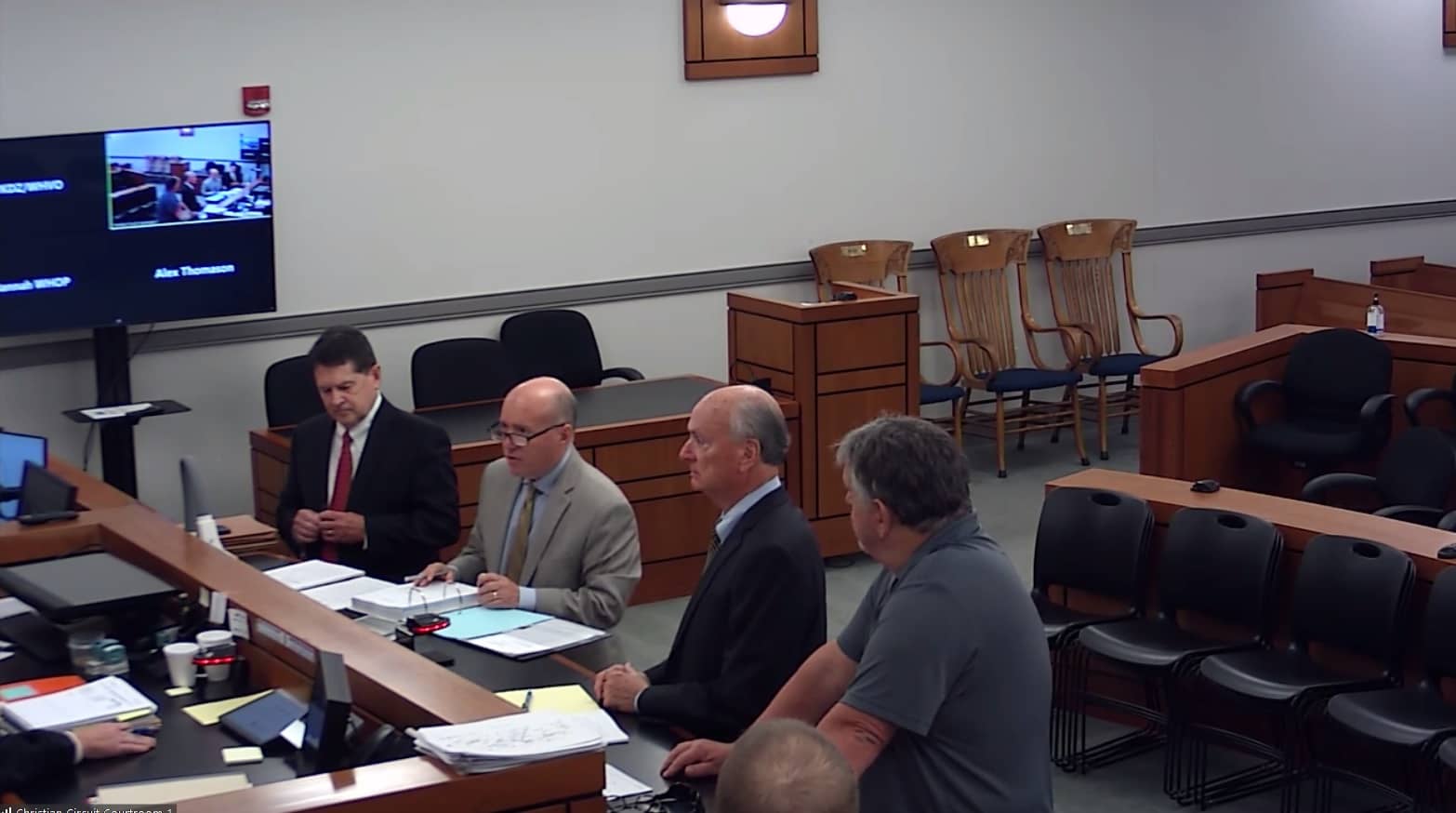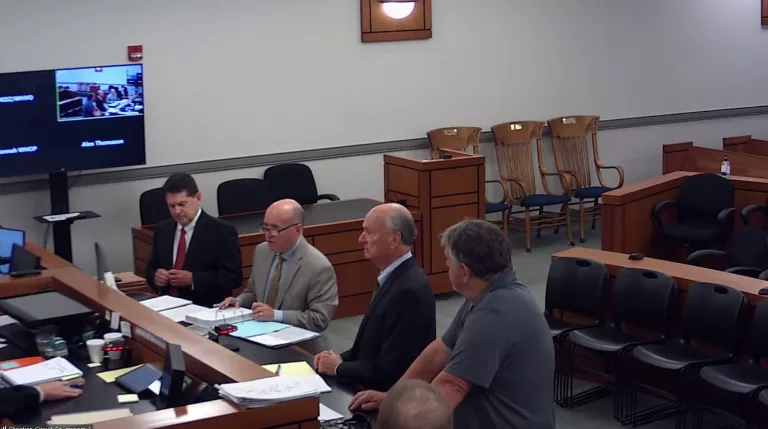
State permits for proper asbestos removal is holding up the demolition of the historic Phoenix building in downtown Hopkinsville.
During a hearing in the civil division of Christian County Circuit Court Wednesday morning, attorneys for the owners and the City of Hopkinsville addressed concerns that the project is not moving fast enough.
The building was condemned by the City in January. When no repairs were made or an indication that any improvements would be made, a court order was entered for demolition to begin on August 7, 2023, and be completed in 30 days. Sixteen days after the order was entered, the windows to the building have been boarded up but no demo work has started.
Defense attorney Kenneth Humphries told the court that the Lexington-based contractor hired to bring the building down completed an asbestos abatement report last week. That report was submitted to the Kentucky Division of Air Quality for approval.
Humphries added they are waiting to learn the cost of asbestos abatement.
There was some discussion on why the former Holland building located next door, was condemned and razed in a six-week period. That work was done by the city through its contractor.
Judge Andrew Self told the parties that he felt the ball was rolling on the project and didn’t feel like the owners were acting in bad faith. However, he added it shouldn’t have taken this long.
Al Cravens, son of the building’s owner who is handling legal matters, asked what the hurry was in taking the building down.
City Attorney Doug Willen also questioned why the contractor has not erected a safety fence around the property to keep people from entering the condemned building. Judge Self agreed and said the building posed a safety issue, especially with downtown Hopkinsville set to host the annual Summer Salute this weekend.
Both sides also addressed the manner in which bricks from the Phoenix Building could be saved and used to help rebuild a wall and roof of the Woody Winfree Fire Museum and clock tower that was damaged in March storms.
Regulations require any work done on a building registered as historic in nature must use bricks or material from the same time as when it was built. Humphries said about 1,000 to 2,000 bricks will be transferred to the museum once demolition is completed.






